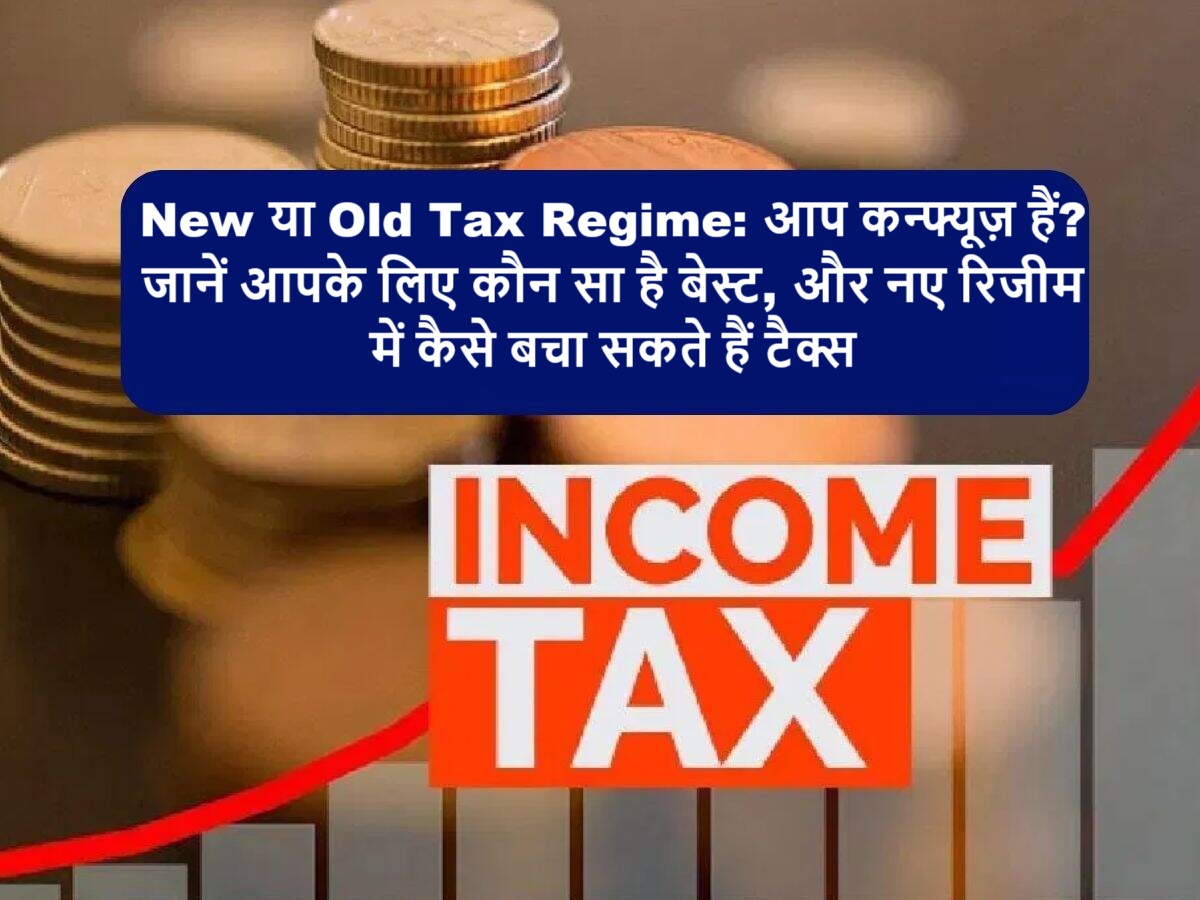The new financial year has started and the time to file income tax returns (ITR) is also coming closer. Most of the people have now started preparing that last year (from April 2023 to March 2024), calculate their earnings and file ITR as soon as possible. This return will be for the Assessment Year (AY) 2024-25.
During this time, the biggest question which is in the minds of people is that the old tax regime is better for them or the new tax regime, which is now implemented by default. If you are also confused, then this news can be useful for you. Let us understand that in which tax regime you can get more benefit.
Old vs. New Tax Period: Whom to choose?
There is a simple account:
-
If you have made a lot of tax -saving investments: Such as Life Insurance (LIC), PPF, ELSS Mutual Fund (under Section 80C), home loan interest, medical insurance (section 80D), HRA exemption etc. Old Tax Regime Can be beneficial for you. In this, you can claim tax exemption on all these investment and expenses.
-
If you have not made much tax -saving investment: Or if you do not want to get into all these mess New tax regime (Which is now default) can prove better for you. This is because it has less tax slabs and no tax on annual income of up to ₹ 7 lakhs (by standard deduction and rebate).
Although there are many types of discounts in the old tax regime, some special deductions and discounts are also available in the new tax regime. Let’s know in which 6 ways you can save tax in the new tax regime:
6 ways to save tax under new tax regime:
-
Standard deduction:
-
The new tax system for salaryized people and pensioners also provides standard deduction of ₹ 50,000. It was earlier only in the old system, but now it has also been made part of the new system.
-
This means that tax will be calculated only by reducing your salary or pension income directly by ₹ 50,000. This reduces taxable income. (Note: The original article mentioned 75,000, which is not correct. It is 50,000 in both regiments).
-
-
Employer’s contribution to NPS (Section 80CCD (2)):
-
This discount is only for employees getting salary. If your company (employer) deposits money in your National Pension System (NPS) account, then you can get tax rebate on that amount.
-
This exemption for government employees is up to 14% of their basic salary + DA.
-
This is up to 10% of their basic salary + da for private sector employees.
-
This exemption is available above the limit of ₹ 1.5 lakh of section 80C.
-
-
Contribution to Agniveer Corpus Fund (Section 80CCH (2)):
-
Under the Agneepath scheme, there is a tax exemption on the amount deposited by Agnivirs and the government in their ‘Agniveer Corpus Fund’.
-
If a Agnivir dies unfortunately during service, then the lump sum amount received to his family is also tax free.
-
This exemption is available in both old and new tax systems.
-
-
Family pension exemption:
-
If after the death of an employee, his family gets a family pension, then there is some relief in tax on him.
-
Under the new tax system, one-third (1/3rd) part of the pension received or ₹ 15,000 (fifteen thousand rupees), whichever is less, is not taxed. (Note: The original article mentioned 25,000, which is not correct. The limit is ₹ 15,000).
-
-
Transport allowance for disabled employees:
-
Employees who are differently-convinced, they also get a rebate in new tax revision on transport allowances for going to office. (Its limit is fixed according to the rules, often it is real expenses or to a certain extent). This helps a little in their daily expenses.
-
-
Some other discounts under section 10:
-
Initially, many discounts of section 10 were removed in the new tax regime, but now some important discounts are also available in it:
-
VRS (Voluntary Retirement Plan): The amount of up to ₹ 5 lakhs received on taking VRS is tax-free.
-
Gratuity: Gratuity for government employees is completely tax-free. For private employees, the amount of gratuity is tax-free under certain conditions and limits (eg ₹ 20 lakh).
-
Leave Encashment: The money (leave encashment) received in lieu of the remaining holidays at the time of retirement or resignation is a tax-free of up to ₹ 25 lakh.
-
-
The post New or Old Tax Regime: Are you confused? Learn which is the best for you, and how can you save tax first appeared on News India Live | Breaking India News, The Indian Headline, India Express News, Fast India News.
